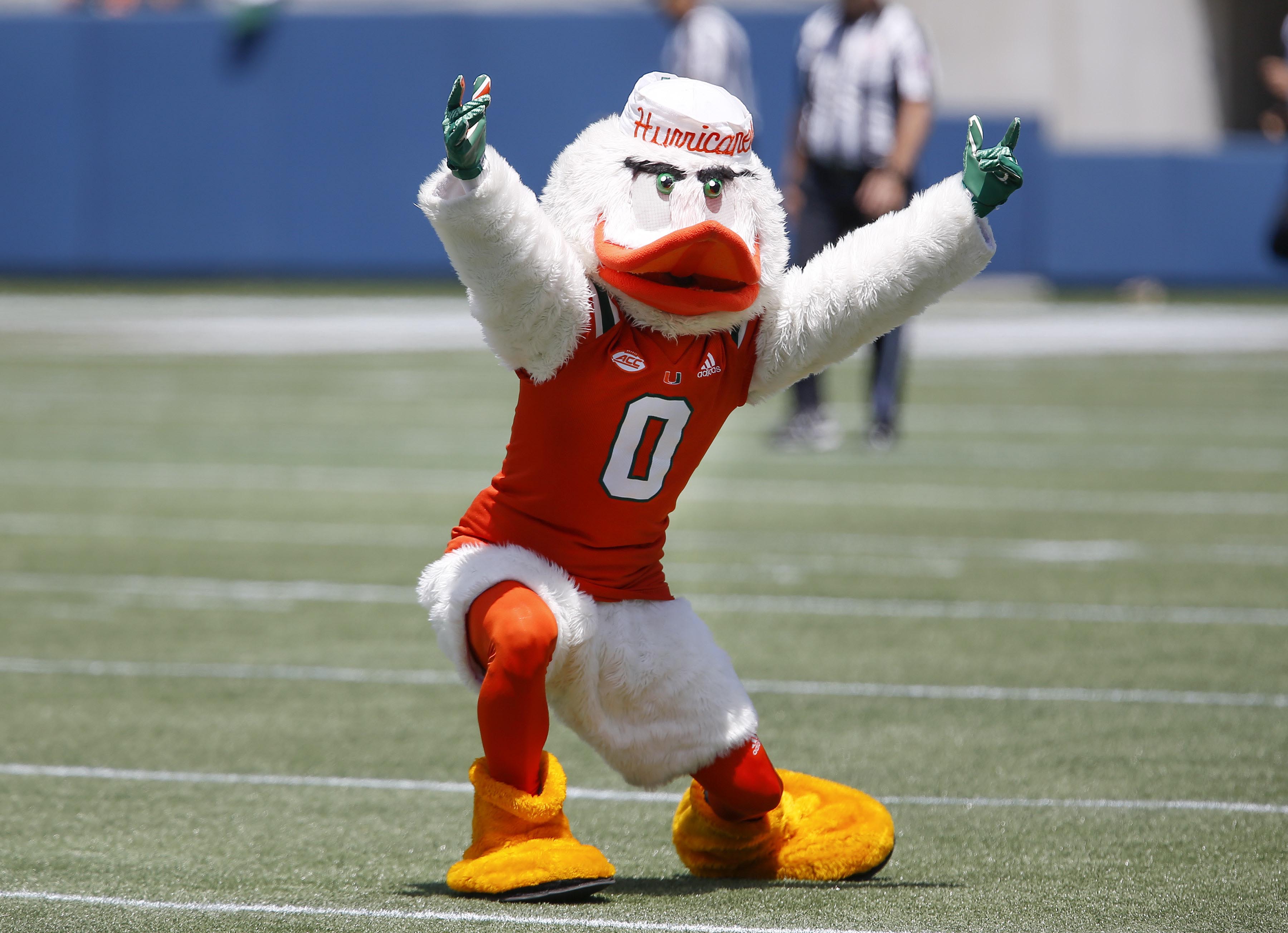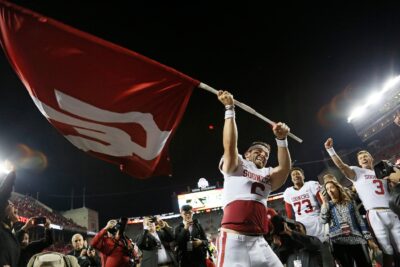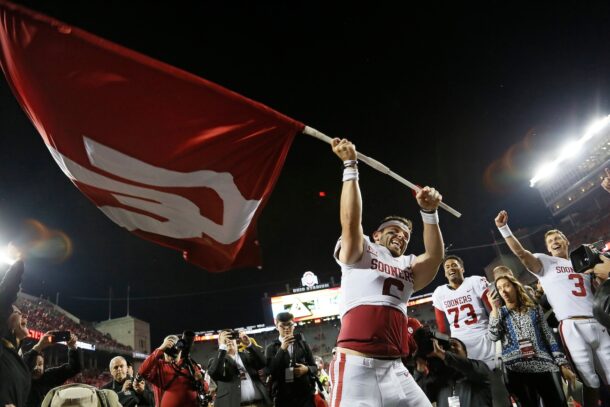
Why is the NCAA allowed to discriminate against college football transfers?
By Chris Wright
Published:
Danielle Collins was a can’t-miss college recruit, the best prospect in Florida and second-best in the country in the 2012 recruiting class.
Collins signed with Florida. The freshman played but didn’t always start. Dissatisfied, Collins transferred to Virginia … and won a national championship the next year.
How? The simple answer is Collins played tennis, not football, baseball or basketball. And the NCAA treats athletes in those lower-rev sports much, much differently from the Big 3. Non-rev athletes are free to go as they please, never bothered by the NCAA’s archaic approach to Big 3 player movement.
Is that fair? To non-rev athletes, absolutely. To Big 3 athletes, of course not.
In form, this is textbook discrimination. The NCAA can hide behind the fact it is a private entity, free to construct its own rules, but college athletes are college athletes. Public school or private, ordinary to the extraordinary ones like Collins, who won 2 women’s singles titles at Virginia, thus becoming only the 7th player in the sport’s history to accomplish that feat.
It is impossible to justify why the NCAA permitted Collins — and hundreds of other non-rev transfers — to transfer and play immediately, while holding major sport athletes to different, far more restrictive guidelines.
This is copied and pasted directly from the NCAA’s website:
“One-time transfer exception: If you transfer from a four-year school, you may be immediately eligible to compete at your new school if you meet ALL the following conditions:
- You are transferring to a Division II or III school, or you are transferring to a Division I school in any sport other than baseball, men’s or women’s basketball, football (Football Bowl Subdivision) or men’s ice hockey. If you are transferring to a Division I school for any of the previously-listed sports, you may be eligible to compete immediately if you were not recruited by your original school and you have never received an athletics scholarship.”
The NCAA is highlighting the fact, that in practice, those words function to discriminate against baseball, basketball and football players.
We’re supposed to be OK with that? Can you imagine the outrage if you swapped those sports for “men,” “women,” “senior citizens,” or some other group?
Not enough people know or care how transfer rules vary by sport. Baseball, for instance, used to be like tennis … and track … and wrestling … and soccer and a dozen other non-rev sports.
One time in their career, Division I baseball players were allowed to transfer to another Division I program and play immediately. Once, but only once. It was a fair and reasonable guideline, particularly given how unjust the 11.7 scholarship allotment is to that sport.
The one-time exception benefitted the players, who typically transferred for more scholarship money.
In 2008, the NCAA changed baseball’s D1-to-D1 transfer rule. They grouped baseball players with basketball and football players. They didn’t raise the scholarship limit, though. They merely punished baseball players who no longer could search out a full ride or even more of a partial ride.
The press releases pushed the NCAA’s message that the new rule was an attempt to curb transfers because transfers led to lower APR and graduation rates.
I hope you rolled your eyes, too.
The real reason, the unspoken reality? As is usually the case, it had nothing to do with academics or the player’s welfare and everything to do with competition.
Coaches were complaining because the summer leagues, most notably the prestigious Cape Cod League, were becoming an illegal recruiting ground and coaches simply couldn’t trust each other enough to keep their hands off the players. Transfers filled gaps, hit third, helped win games.
John Cohen played and coached baseball at Mississippi State before becoming the Bulldogs’ athletic director. He has seen every side of the issue.
“What you’ve had in the past is coaches hanging out in a place like the Cape Cod League, keeping (scholarship) money back and waiting for a so-called mid-major player to pop up,” he said in a discussion with Baseball America. “Even though they couldn’t contact them directly, they just decided to transfer and some of these schools had scholarship aid available. That was the wild, wild West back then. I think the rules are currently in place to prevent that from happening.”
Picture back-room bargaining at its seedy worst, AAU basketball style, replete with strong-ass offers.
So the men in charge met, discussed and punished the players by implementing a 1-year wait period. It certainly calmed the waters. College baseball’s transfer rate dropped. The NCAA has numbers to support that. Student loans for players who could have gotten more money elsewhere? I’m guessing they increased, though that information is far more anecdotal and not something the NCAA advertises.
“If you look at the success Division I baseball has had since implementing the rules, it’s really helped,” Cohen told Baseball America. “It has helped protect some Division I rosters. I think the very nature of college baseball has improved since that happened.
“But I will say there should be opportunity for student-athletes to find the best situation. I clearly understand that model. It’s very difficult to balance those two.”
I’ll respectfully disagree on his final point. It’s very easy. Treat every athlete the same.
This conversation matters because, just this week, the NCAA met, discussed and decided again to punish the players.
This time the men in charge are going after the waiver exceptions that some high-profile college football players used to gain immediate eligibility, you know, the waiver that Danielle Collins didn’t need. Tweaking the rules certainly is easier than trying to explain why Jacob Eason had to sit a year, but Tate Martell and Justin Fields don’t.
It’s sad that such a waiver remains necessary, sad that the men in charge are still so hell-bent on restricting and punishing the very same athletes who create the buzz and the capital to build and fill those fancy suites.
The reason hasn’t changed, either. College football coaches are complaining about the transfer portal because they don’t trust each other to stay away. They can’t help themselves. Their livelihoods depend on winning games, and it’s easier to win with disgruntled 4-stars than hard-working 2-stars.
The result is quarterbacks, point guards and shortstops continue to pay the price.
I have so little faith in the NCAA to actually do the right thing and allow every athlete the freedom to transfer and play immediately that, at this point, there’s only one solution.
Go pick up a tennis racket.
Managing Editor
A 30-time APSE award-winning editor with previous stints at the Miami Herald, The Indianapolis Star and News & Observer, Executive Editor Chris Wright oversees editorial operations for Saturday Down South.







